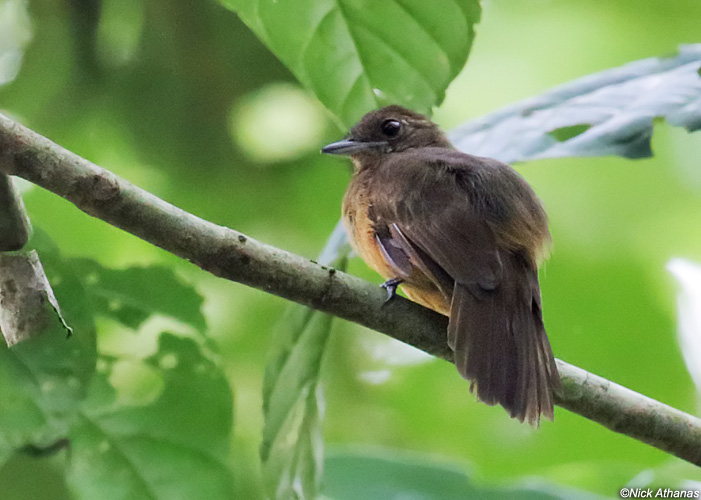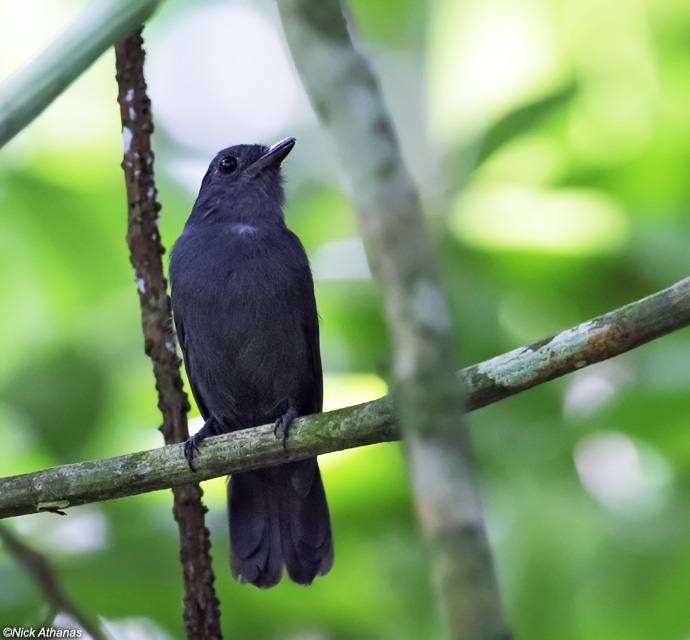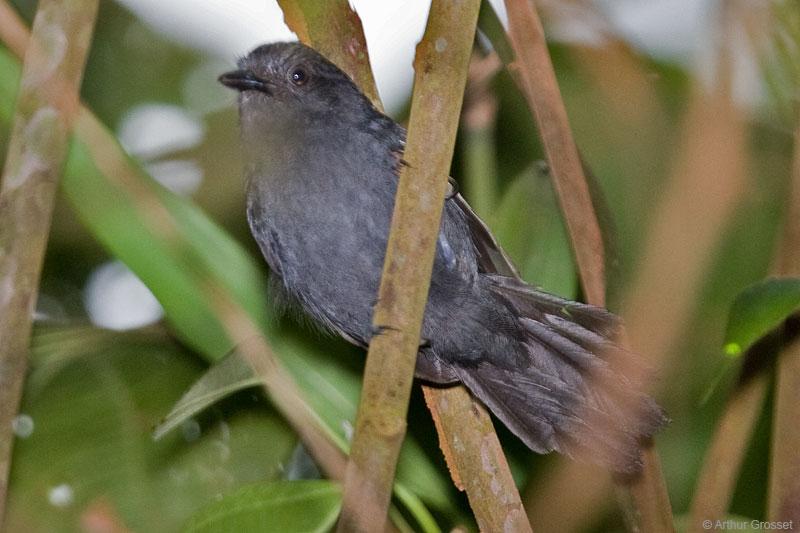
Thamnomanes caesius
TAXONOMY
Thamnomanes caesia Temminck, 1820.
OTHER COMMON NAMES
English: Bluish-slate antshrike; French: Batara cendrй German:
Buschwьrgerling; Spanish: Choca Guayanesa.
PHYSICAL CHARACTERISTICS
6 in (14.5 cm), with a long tail.
DISTRIBUTION
Much of northern tropical South America; east of the Andes in
Venezuela, Guyana, Colombia, Ecuador, northeastern Peru,
Amazonian Brazil, and northeastern Bolivia; coastal eastern
Brazil.
HABITAT
Up to 2,650 ft (800 m) in humid, lowland tropical forest, especially
in terra firme (or non-flooded) habitats and mature secondary
forest; lower-canopy habitats.
BEHAVIOR
Nonmigratory pairs defend a breeding territory, but may also
associate with mixed-species flocks. The vocalizations are loud
and distinct, and help to organize local, mixed-species flocks.
Song is a series of notes and trills.
FEEDING ECOLOGY AND DIET
Feed in dense foliage on insects and other arthropods. Prey is
often caught in the air.
REPRODUCTIVE BIOLOGY
Monogamous pairs bond for life, typically lay two eggs, and
share incubation and care of nestlings and fledglings.
CONSERVATION STATUS
Not threatened. Widespread and relatively abundant.
SIGNIFICANCE TO HUMANS
No direct significance, except for the indirect economic benefits
of bird-watching and ecotourism.
Other popular Animals
Photo Gallery of - Cinereous antshrike




 Animalia Life
Animalia Life